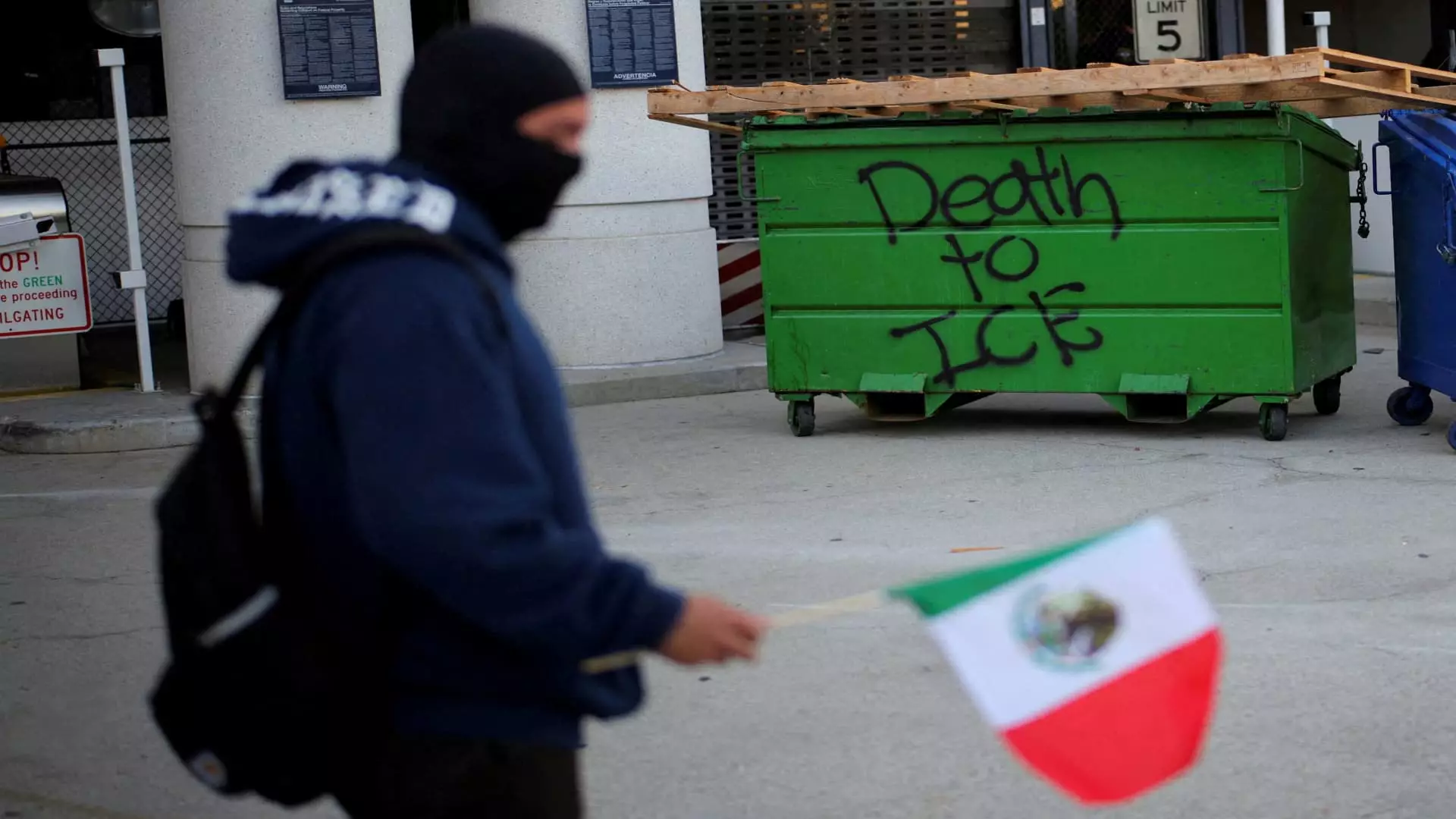Recent events in Los Angeles highlight an unsettling duality in American society: the clash between governmental authority and civil liberties, particularly regarding immigration enforcement. On a seemingly ordinary Saturday, federal agents met demonstrators protesting aggressive immigration raids in a gripping confrontation that reverberated throughout the city and the nation. The protests arose following aggressive operations by Immigration and Customs Enforcement (ICE), which culminated in the detention of at least 44 individuals, showcasing the ongoing tensions around immigration policy under the Trump administration.
The day’s events were notably colored by the charged remark from White House senior adviser Stephen Miller, who branded the protests as an “insurrection”—a term that not only incites panic but underscores a broader narrative favoring authoritarian responses to dissent. While protests are steeped in the fabric of American democracy, Miller’s characterization reveals a deliberate attempt to vilify those who stand against government overreach, painting them as threats to national order rather than voices of an oppressed community.
The War on Immigrants: More Than Just Legal Offenses
What’s striking about this situation is the extreme backlash that has become the hallmark of the current administration’s rhetoric on immigration. The goal to arrest 3,000 migrants daily signifies not just a crackdown on undocumented immigrants but a targeting of vulnerable populations, including those who have been granted legal residency. The irony lies in the fact that such immigration policies are not designed solely to curtail illegal entry, but often to intimidate entire communities, engendering an atmosphere of fear and mistrust.
Further, the actions of the Department of Homeland Security (DHS) reflect a militarization of local law enforcement in response to dissent, as seen in the deployment of federal agents clad in military-like uniforms. This precarious blending of immigration enforcement with military tactics raises questions about civil rights and the foundational principles upon which this country was built. As the LAPD turned its attention to managing the protests rather than enforcing immigration laws, it became evident that the community was divided, with some viewing federal intervention as necessary and others opposing it as a violation of basic human rights.
The Intersection of Local Politics and National Policy
Mayor of Los Angeles Karen Bass’s condemnation of the raids represents a significant pushback against federal overreach. Her statements reflect the reality in many urban areas—strongly diverse and of large immigrant populations—where local leaders often find themselves at odds with the policies of the federal government. Bass’s insistence that the tactics employed by ICE “sow terror” resonates with a growing sentiment that the safety and dignity of residents should not be sacrificed on the altar of a hardline immigration policy.
This backlash is not merely political; it reveals an intricate social fabric where immigrant families contribute invaluable cultural and economic threads, and yet find themselves subject to the whims of increasingly draconian federal measures. In essence, the fight in Los Angeles is emblematic of a wider struggle prevalent across several American cities grappling with the implications of harsh immigration laws that reflect a broader national sentiment centered around fear and exclusion rather than welcome and inclusion.
The Need for Compassionate Policy and Understanding
The fallout from these protests serves as a candid reminder that while laws are inscribed to maintain order, they must also be framed within the context of humanity and compassion. A political climate steeped in fear and divisiveness only exacerbates the underlying societal tensions. The approach advocated by the Trump administration—enforcement as the cornerstone of immigration policy—undermines the values of diversity and inclusion that should define America, turning vibrant communities into flashpoints of unrest.
Moreover, the rhetoric from officials like DHS Assistant Secretary Tricia McLaughlin blames rhetoric from local leaders for escalating tensions, ignoring the very real fear and desperation experienced by immigrant communities. This absolutist stance creates a climate where dialogue is not just discouraged; it is rendered virtually impossible. In this politically charged atmosphere, understanding must triumph over demonization. Engaging with communities, listening to their struggles, and crafting humane policies could pave the way for a more stable and cohesive society.
The situation in Los Angeles exemplifies a critical turning point not just for immigration policy but for the soul of America itself—a junction where it must choose between continuing down a path of division or embracing the rich tapestry of its multicultural identity.


Leave a Reply